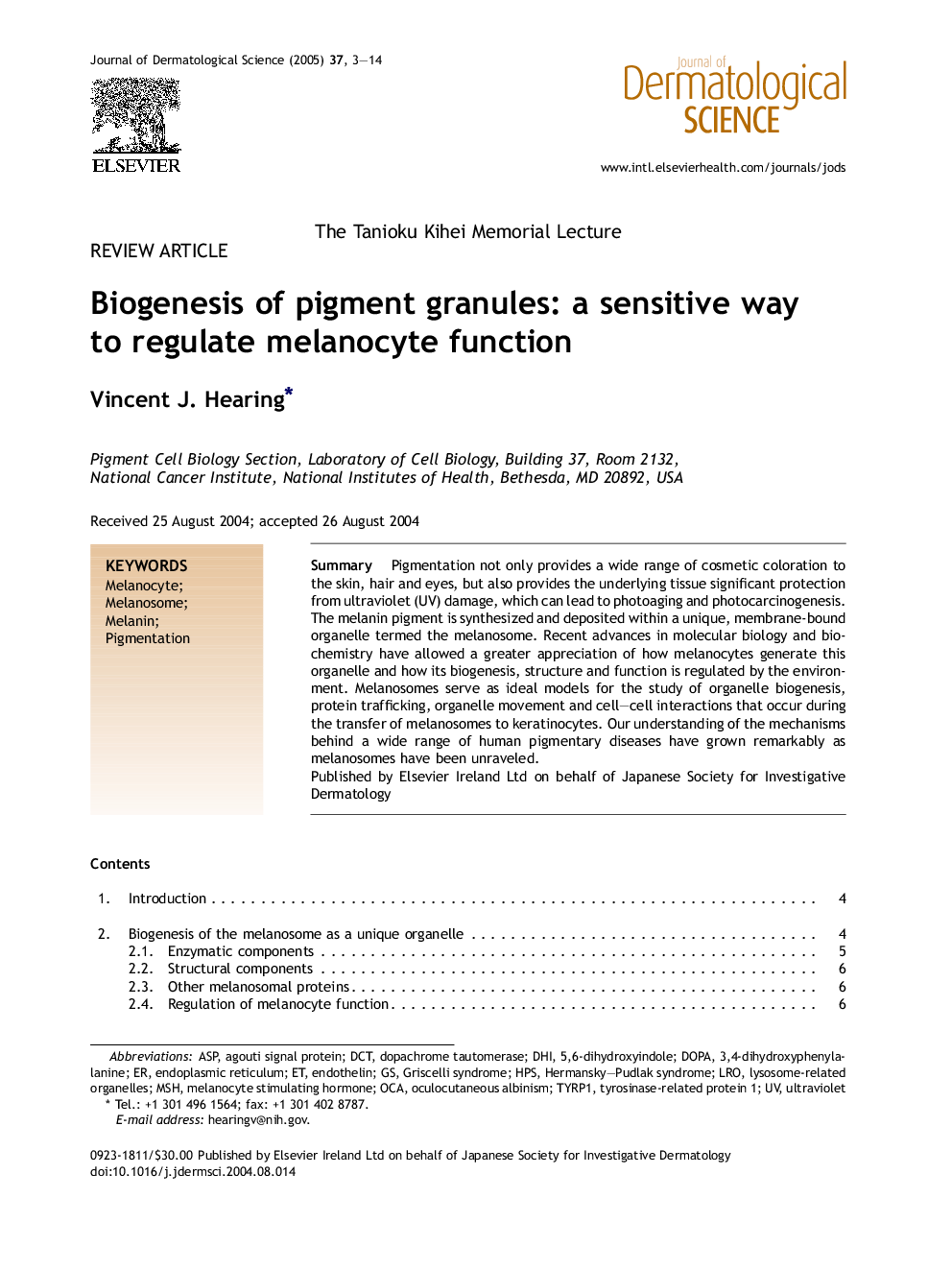| Article ID | Journal | Published Year | Pages | File Type |
|---|---|---|---|---|
| 9229625 | Journal of Dermatological Science | 2005 | 12 Pages |
Abstract
Pigmentation not only provides a wide range of cosmetic coloration to the skin, hair and eyes, but also provides the underlying tissue significant protection from ultraviolet (UV) damage, which can lead to photoaging and photocarcinogenesis. The melanin pigment is synthesized and deposited within a unique, membrane-bound organelle termed the melanosome. Recent advances in molecular biology and biochemistry have allowed a greater appreciation of how melanocytes generate this organelle and how its biogenesis, structure and function is regulated by the environment. Melanosomes serve as ideal models for the study of organelle biogenesis, protein trafficking, organelle movement and cell-cell interactions that occur during the transfer of melanosomes to keratinocytes. Our understanding of the mechanisms behind a wide range of human pigmentary diseases have grown remarkably as melanosomes have been unraveled.
Keywords
TYRP1ASPDOPALROMSHDcTHPSOCA3,4-dihydroxyphenylalanine5,6-Dihydroxyindoleoculocutaneous albinismUltravioletlysosome-related organellesendothelindHIdopachrome tautomerasePigmentationHermansky–Pudlak syndromeGriscelli syndromeendoplasmic reticulumMelanosomeMelanocytemelaninmelanocyte stimulating hormonetyrosinase-related protein 1
Related Topics
Health Sciences
Medicine and Dentistry
Dermatology
Authors
Vincent J. Hearing,
